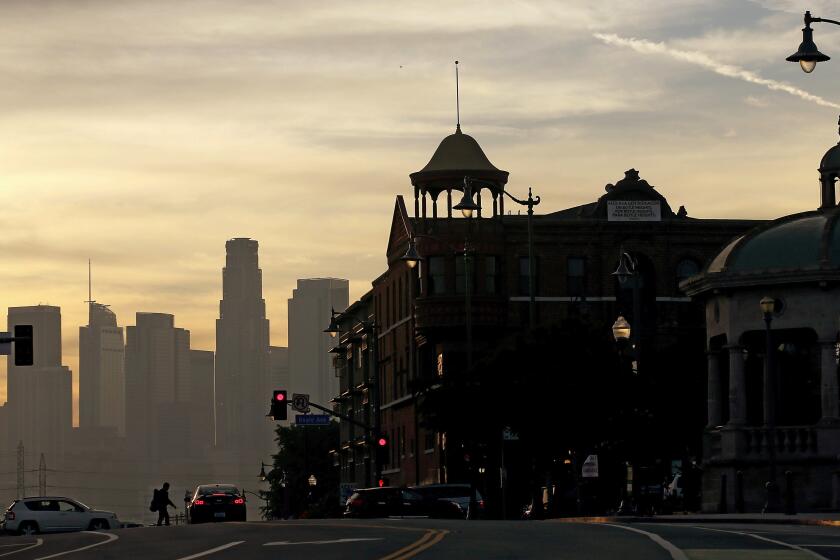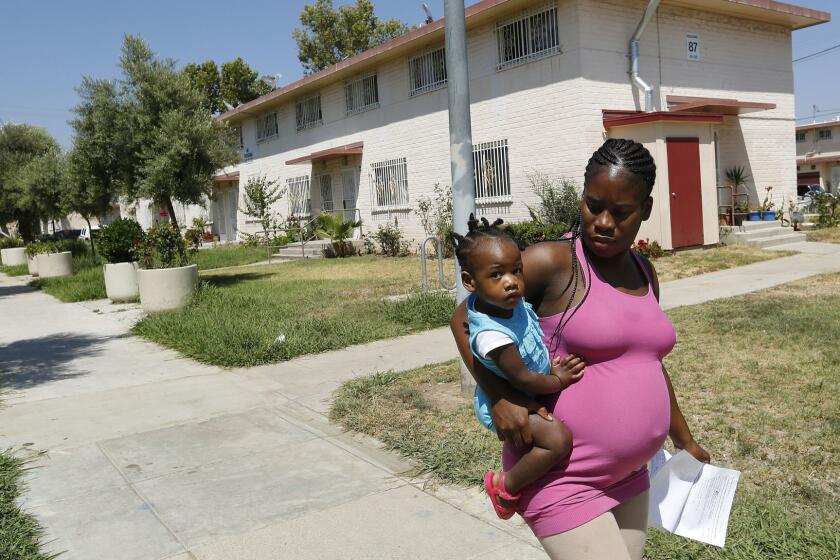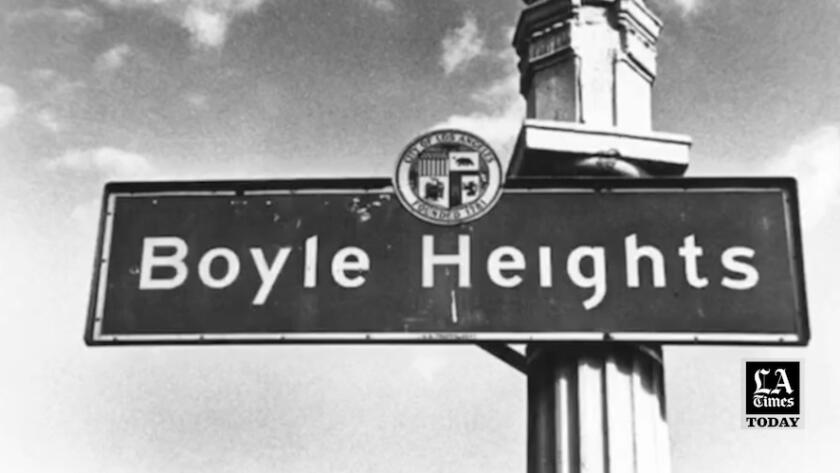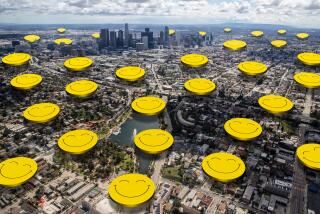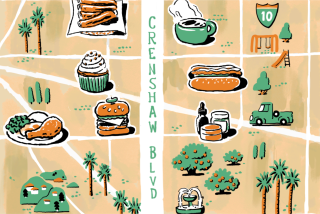They want you to remember Black Boyle Heights: ‘We were there’
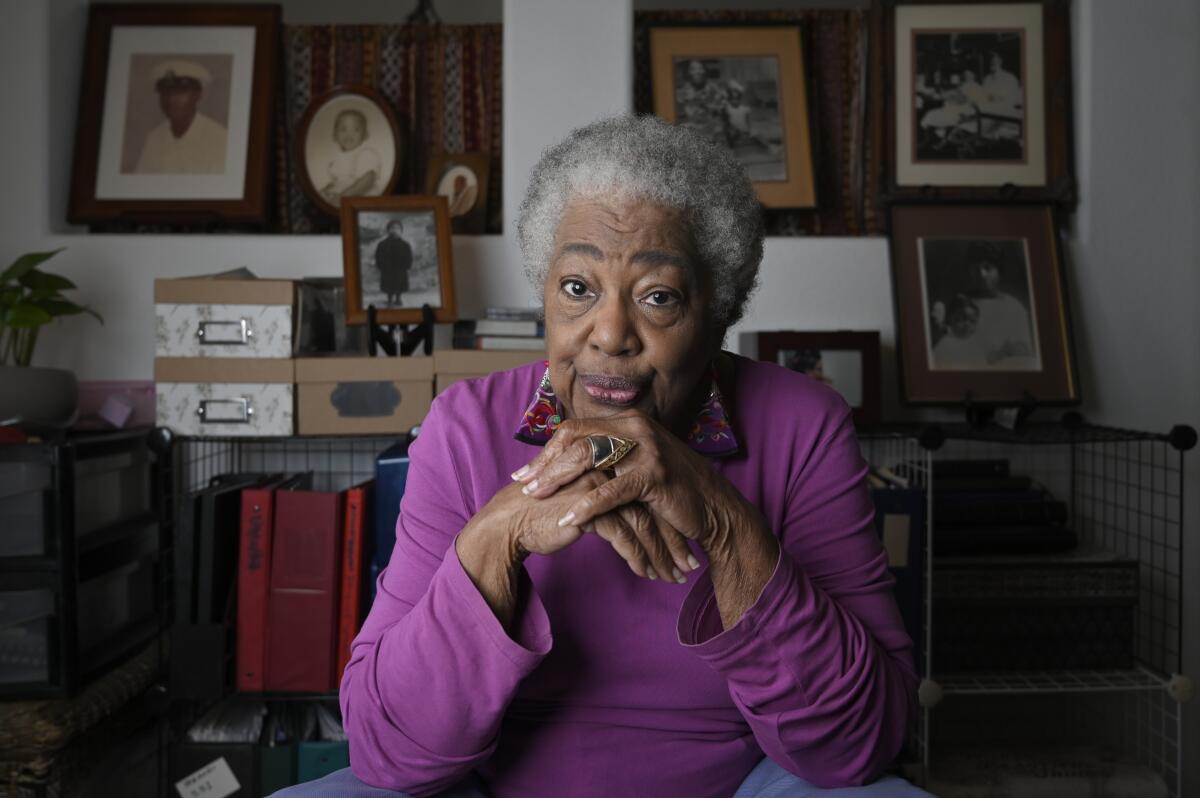
If you learn just one thing about Boyle Heights — a famously Latino neighborhood, home to Mariachi Plaza — Shirlee Smith hopes it’s this: “We were there.”
And, she said, we left our mark, although it is fading today in numbers and in memory.
Smith is 85 years old, a daughter of the Great Migration of Black people fleeing the segregated South. She grew up in Boyle Heights, once considered the Ellis Island of the West Coast, home to Mexicans and Jews, Russians and Italians, people of Japanese descent.
She created a Facebook group, Black Boyle Heights, to preserve and archive the fragile history of the neighborhood’s earliest Black residents and the ones who followed. And last Sunday, as Black History Month kicked off, she convened a virtual celebration of the old days with more than 50 people.
They lauded musicians who grew up in the neighborhood: Hadda Brooks, the “Queen of the Boogie,” and will.i.am, who grew up in the Estrada Courts housing project. They honored the lives of their elders, some of whom have since died. They narrated the life story of John Wesley Coleman, one of Boyle Heights’ earliest Black residents, known as the “Employment King of Los Angeles.”
Today there aren’t many Black Boyle Heights residents left, just 1% of the population. The few times Black Angelenos made major news in this neighborhood were when families were firebombed in 1992 and 2014, by people who wanted them out of the Ramona Gardens housing project.
But that wasn’t on the minds of attendees Sunday afternoon, as they reminisced over families they raised there, just over the bridge from downtown L.A., and laughed over shared memories involving the neighborhood seamstress.
“How, why and when did Black folk come to Boyle Heights?” Smith asked during the gathering. “Well, the California dream brought us here.”
::
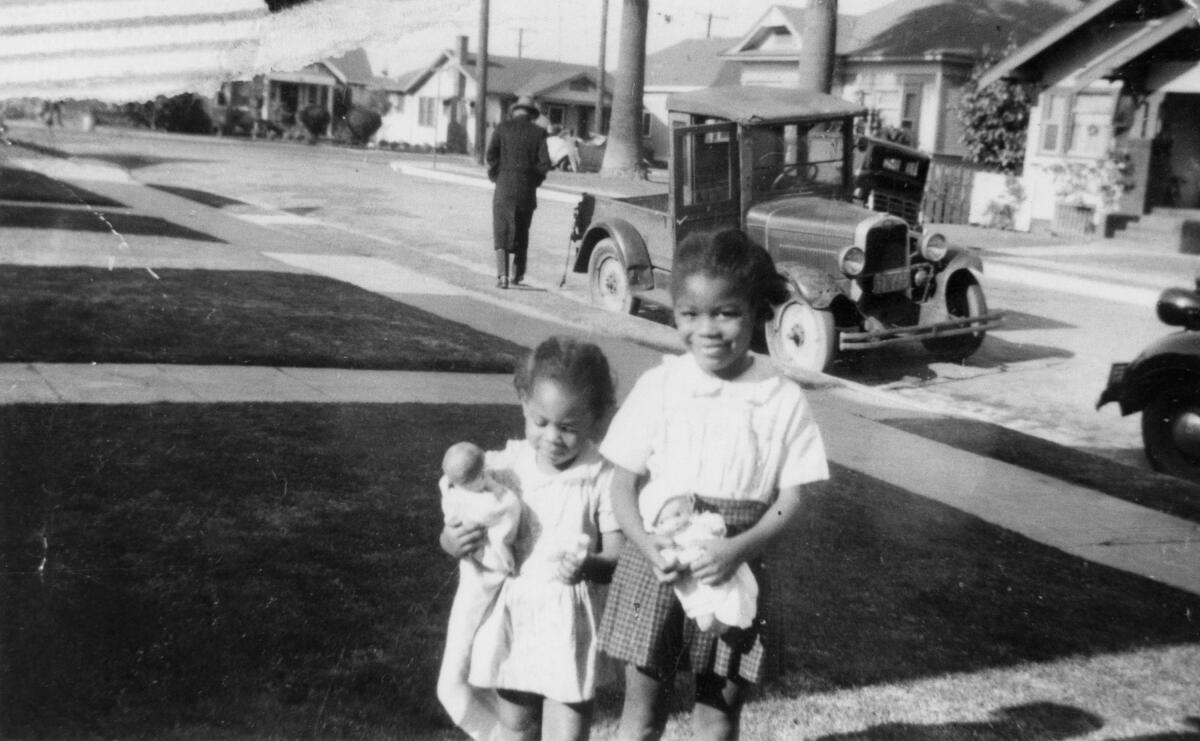
Boyle Heights, established in 1858, came to attract residents from across racial and ethnic lines because of its lack of the racially restrictive covenants that dictated who could live where throughout much of the city. The neighborhood, which lay east of the winding Los Angeles River, became a landing spot for newcomers.
Harriet Owens-Bynum was one of the first Black residents to arrive in 1887, moving with her family from Austin, Texas. She became a real estate agent selling lots and houses and renting to other Black families in Boyle Heights, according to Delilah L. Beasley’s 1919 book “The Negro Trail Blazers of California.” Her son, John Wesley Coleman, opened an employment agency and later helped his mother develop Coleman Flats, a Boyle Heights apartment building for Black residents, Beasley wrote.
The Black population in the neighborhood began to take off in the early 20th century, as California became a landing point for those fleeing the Jim Crow South. Many settled near Evergreen Cemetery and found jobs working as Pullman porters.
If you’re interested in healing a divided nation and combating inequality, look for inspiration to the cross-cultural cooperation among immigrants groups in Boyle Heights in the first half of the 20th century.
Smith’s father, Eugene Pickett, moved to Boyle Heights from St. Louis with his mother in 1915 when he was 8 years old. They joined an aunt who lived on Rivera Street, near the Mt. Carmel Missionary Baptist church — an anchor for the small Black community — and the cemetery, which unlike other graveyards never banned African Americans from being buried there.
Her mother, Bernice Williams, migrated from Texas in 1930, motivated by letters from her grandfather that detailed a “wonderful life in sunny California.” When Williams and her mom took a taxi to the grandfather’s address on Highland Avenue, where there were expensive homes and lush green lawns, they learned that he was a butler and his wife a maid.
“Fortunately, the rich, white people were out traveling,” Smith said with a laugh. Her mother and grandmother couldn’t stay there, so they moved in with cousins in Boyle Heights.
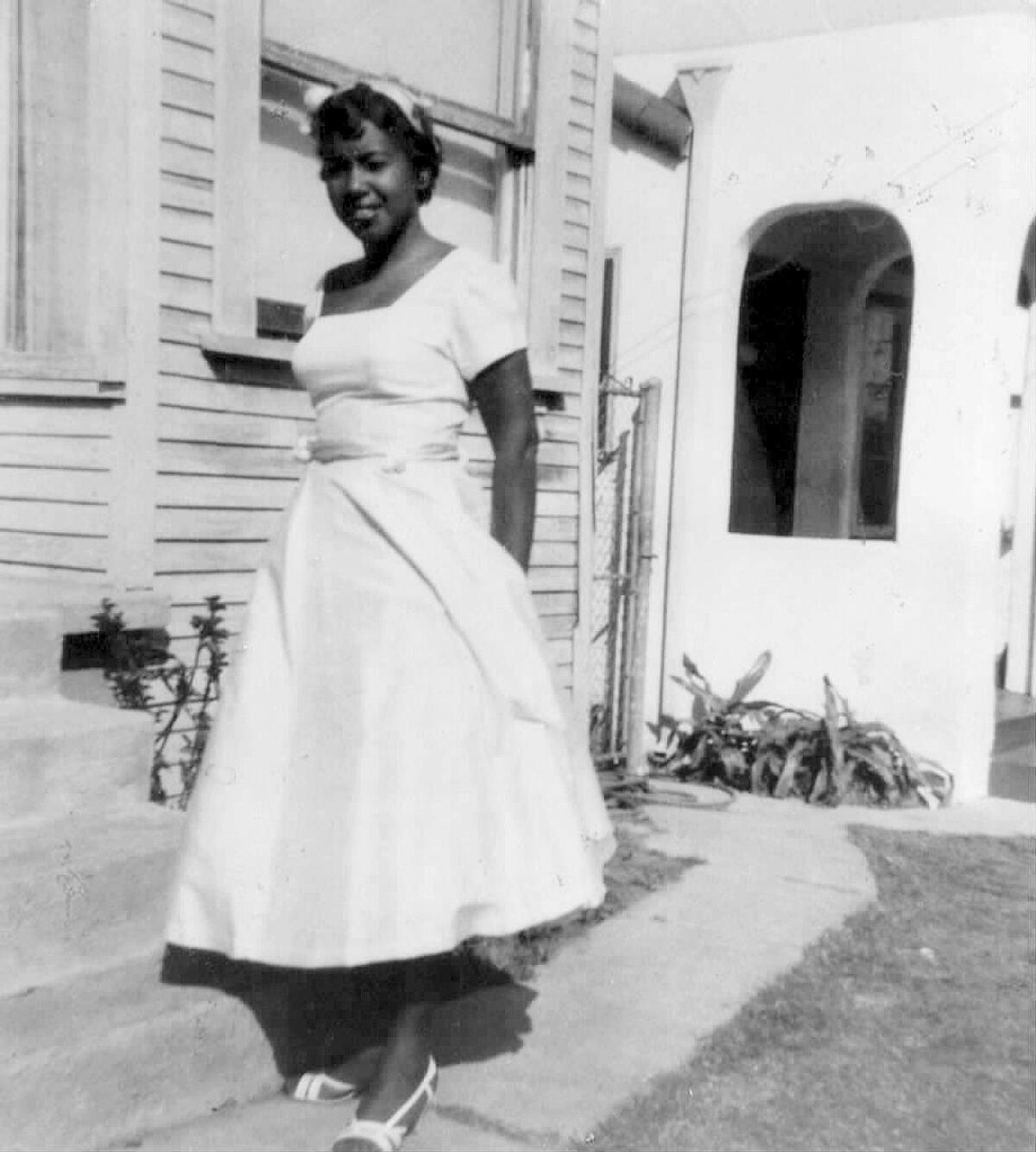
Smith’s parents attended different high schools — Roosevelt and Lincoln — but met in the neighborhood and eventually married in 1933. For the first few years of her life, Smith grew up in her grandmother’s home. Her family moved when she was 5 years old, but returned when she was in sixth grade.
She graduated from Roosevelt High School in 1954 and settled in the neighborhood after getting married. By the time her eldest daughter, Pamela, attended elementary school the neighborhood was predominantly Latino — so much so that her daughter, “always thought she was Mexican because all her friends spoke Spanish.”
From 1960 to 1965, the Black population in Boyle Heights dropped 35%, from 8,502 to 5,520, according to census data.
In 1992, two Black families living in Ramona Gardens were firebombed. History repeated itself in 2014, when Latino gang members threw Molotov cocktails into apartments where Black families slept in an attempt to drive them out.
A gang member who helped carry out a racially motivated attack on black families living in a Los Angeles housing project was sentenced Monday to 13 years in federal prison for the 2014 crime.
Smith, who hadn’t heard of either firebombing, said she didn’t witness those tensions growing up.
“Boyle Heights was an amazing place to live, because you got first-hand knowledge of what other people were like,” Smith said. “You weren’t programmed by what society might have said.”
::
Three years ago, Smith reread dozens of stories her mother had collected from Black families in Boyle Heights back in the early 1990s.
Smith had been a columnist for decades at the Pasadena Star-News, and she knew she needed to do something with her mother’s collection. And that’s how Black Boyle Heights was born.
“A long time ago, Black adults didn’t tell stories. You were lucky to be able to catch some,” Smith said. “They didn’t tell you where they came from, they didn’t tell you their hardships, and you certainly didn’t hear their joys.”
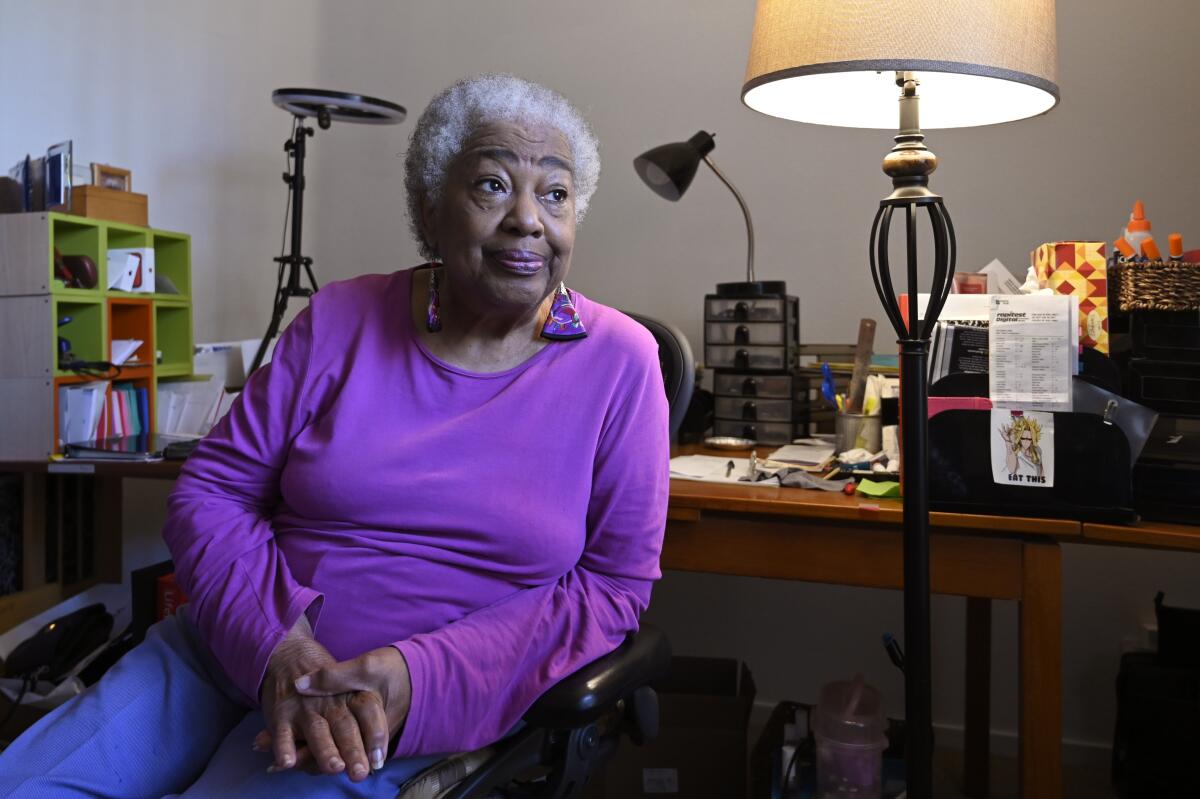
Smith published a handful of stories in Brooklyn & Boyle, a print and online magazine focused on Boyle Heights and other Eastside neighborhoods. There was the story of the Rhineharts, who like many other Black families, moved around within the neighborhood. They recounted once pushing their piano down the street to their new home.
There were Boyle Heights residents William Henry Lawrence, a Black man, and Palma Katz, a child of Jewish immigrants, who met at Roosevelt High School. The couple married in Mexico in 1940, as interracial marriages were illegal in California at the time.
There was the story Smith collected more recently, about Beatrice McBride, known as Aunt Bea, who left New York for Boyle Heights in 1945, when she was 23. She’d talked about learning to drive on the narrow, winding roads of Evergreen Cemetery.
On the Black Boyle Heights Facebook page, members celebrated Mollie Wilson Murphy, who during World War II wrote letters to her Japanese American friends forced into internment camps, and Willie Davis, a star athlete at Roosevelt High who signed with the Dodgers in 1958.
The group of nearly a dozen people is partnering with Company of Angels theater troupe to present an original play called “We Were There Too,” which will highlight the history of Black Boyle Heights residents. They are also working with Code Black Media to create a digital memorialization of these residents.
If the community doesn’t preserve its stories, Smith reasoned, who else will?
::
From her Las Vegas home, the white-haired Smith laughed as she told the Zoom moderator to mute the former Boyle Heights residents shouting out hello to one another from their tiny boxes on the screen. There was Atoy Wilson, the seamstress’ son. Members of the Murphy family, once a pillar of the community. The Lewis daughters, who grew up on Savannah Street in the 1960s.
As they quieted, a slideshow transported them back in time. A black and white photo of a streetcar approaching the intersection of Boyle Avenue and 1st Street in 1895. Another of old Volkswagen Beetles driving past the Sears building in 1950. In the background the Staple Singers crooned, “I’ll Take You There.”
“Welcome to Black Boyle Heights,” said Smith, their tour guide. “I’ll take you there.”
Attendees watched a clip of Hadda Brooks’ fingers flying across a piano and heard some of her most famous song, “Out of the Blue.” Brooks, born Hadda Hopgood in 1916, was raised in the neighborhood by a sheriff father and a doctor mother.
They listened to an audio clip of former resident McBride, who was not able to attend the event, describe life in Boyle Heights as “so slow” that it drove her back to New York for a time. But she soon tired of the fast-paced life on the East Coast.
“Let me get back to California,” McBride said in the clip. “And I’ve been here ever since.”
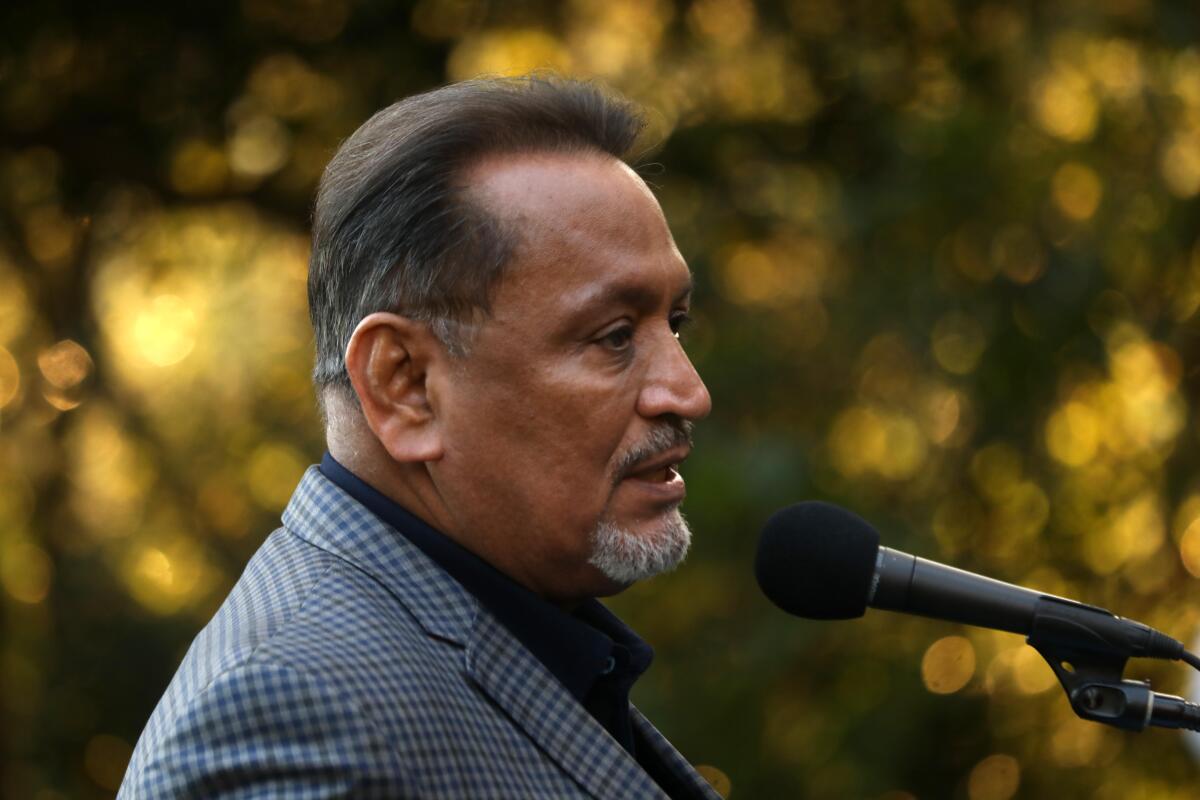
City Councilman Gil Cedillo, who grew up in the neighborhood, signed a certificate for Aunt Bea in honor of her 100th birthday and her “contributions to Boyle Heights.” He expressed a desire to construct a museum to celebrate the neighborhood’s history.
“It’s one of the few places in the world where for a century, a half a dozen or more communities lived together, side by side, shared their greatest hopes and aspirations, struggled together, supported each other, lived as a community,” Cedillo said.
In an emotional moment, organizers played a video of Millard and Mollie Murphy’s 64th wedding anniversary party at the Pasadena Brookside Clubhouse in August 2009. Mollie, the same girl who once wrote letters to her Japanese American friends, died in 2014 and Millard in recent weeks.
The couple was the center of attention as Millard, in a black suit with a flower pinned to it, recounted what landed him in Boyle Heights: Mollie.
Mollie alternated between covering her face and laughing as her husband spoke. He detailed the weeks he visited her in the neighborhood and how he soon realized, “this is the girl I wanted to spend the rest of my life with.” There was a chorus of “awhs” before he finished: “And that’s what I did.”
“I’m starting to tear up. Two extraordinary people Missed,” one attendee wrote in the Zoom chat. “Beautiful seeing them,” another agreed.
As the event came to a close, Denise Williamson — a Lewis daughter — led the group in a game of Boyle Heights Jeopardy. She asked attendees the former name of Cesar E. Chavez Avenue (Brooklyn Avenue) and the name of the neighborhood seamstress (Thelma Wilson), which Atoy, of course, guessed easily.
It was Thelma who made Smith’s sister’s wedding gown and her bridesmaid dresses, Smith told Atoy.
“I remember being there in your living room,” she said, “and her saying I was fat.”
Everyone, old and young, burst out laughing.
Watch L.A. Times Today at 7 p.m. on Spectrum News 1 on Channel 1 or live stream on the Spectrum News App. Palos Verdes Peninsula and Orange County viewers can watch on Cox Systems on channel 99.
More to Read
Sign up for Essential California
The most important California stories and recommendations in your inbox every morning.
You may occasionally receive promotional content from the Los Angeles Times.

